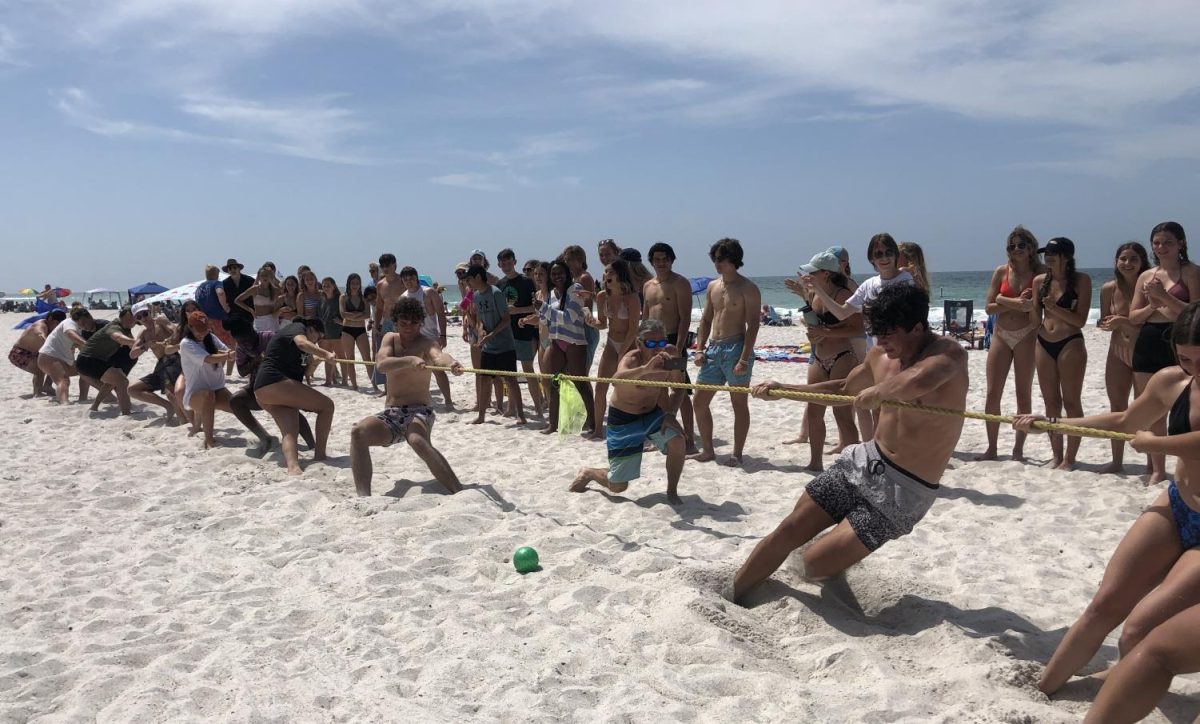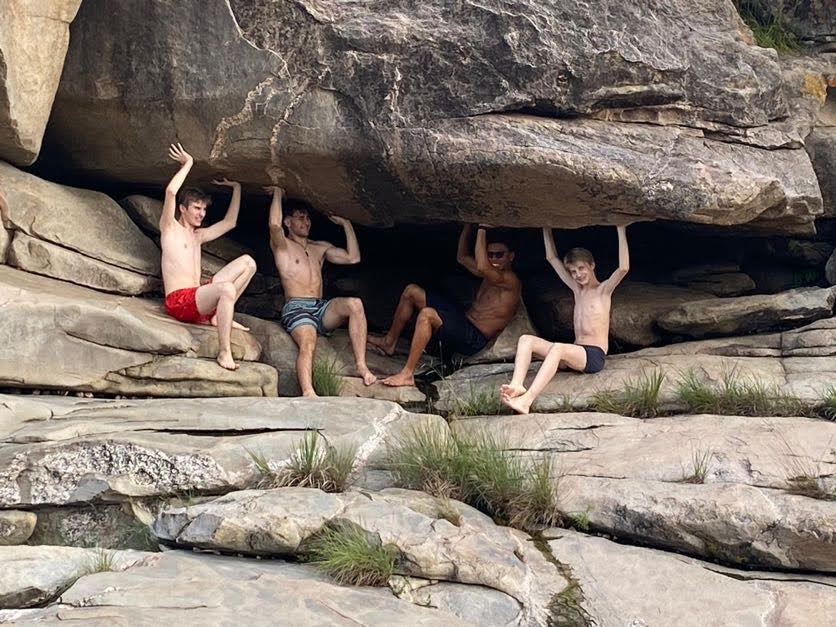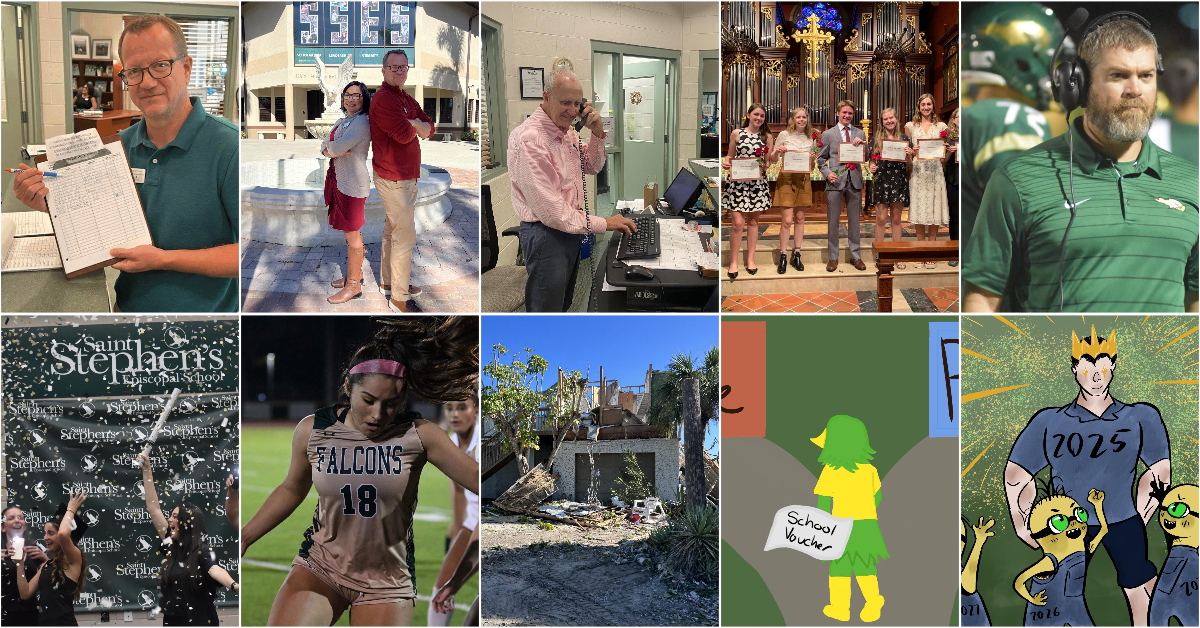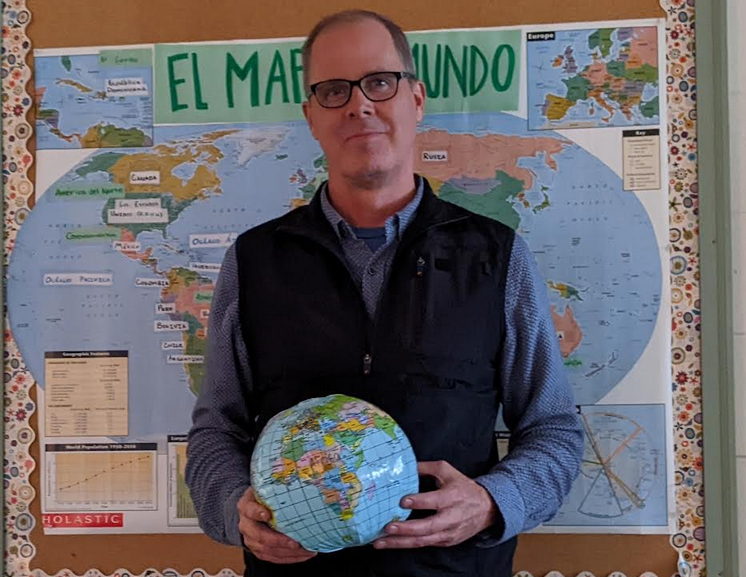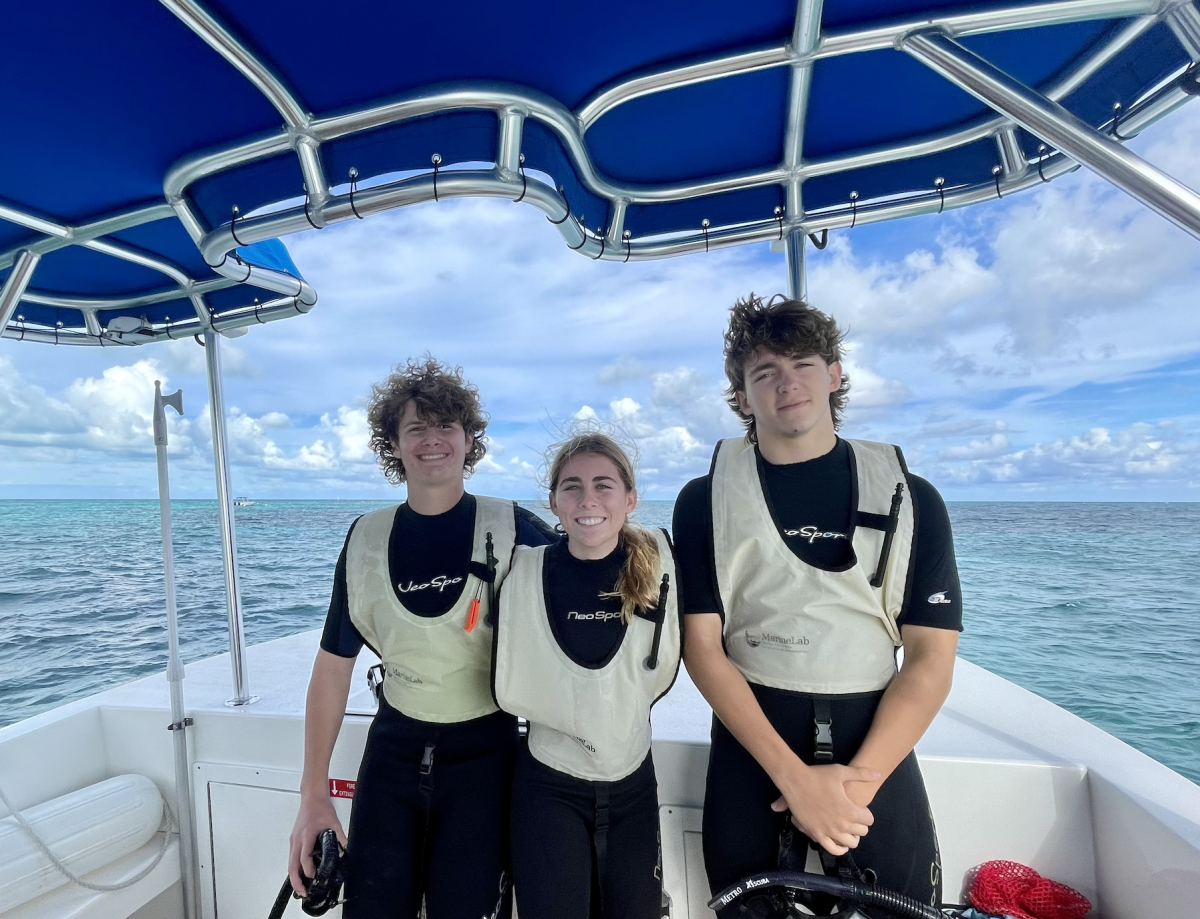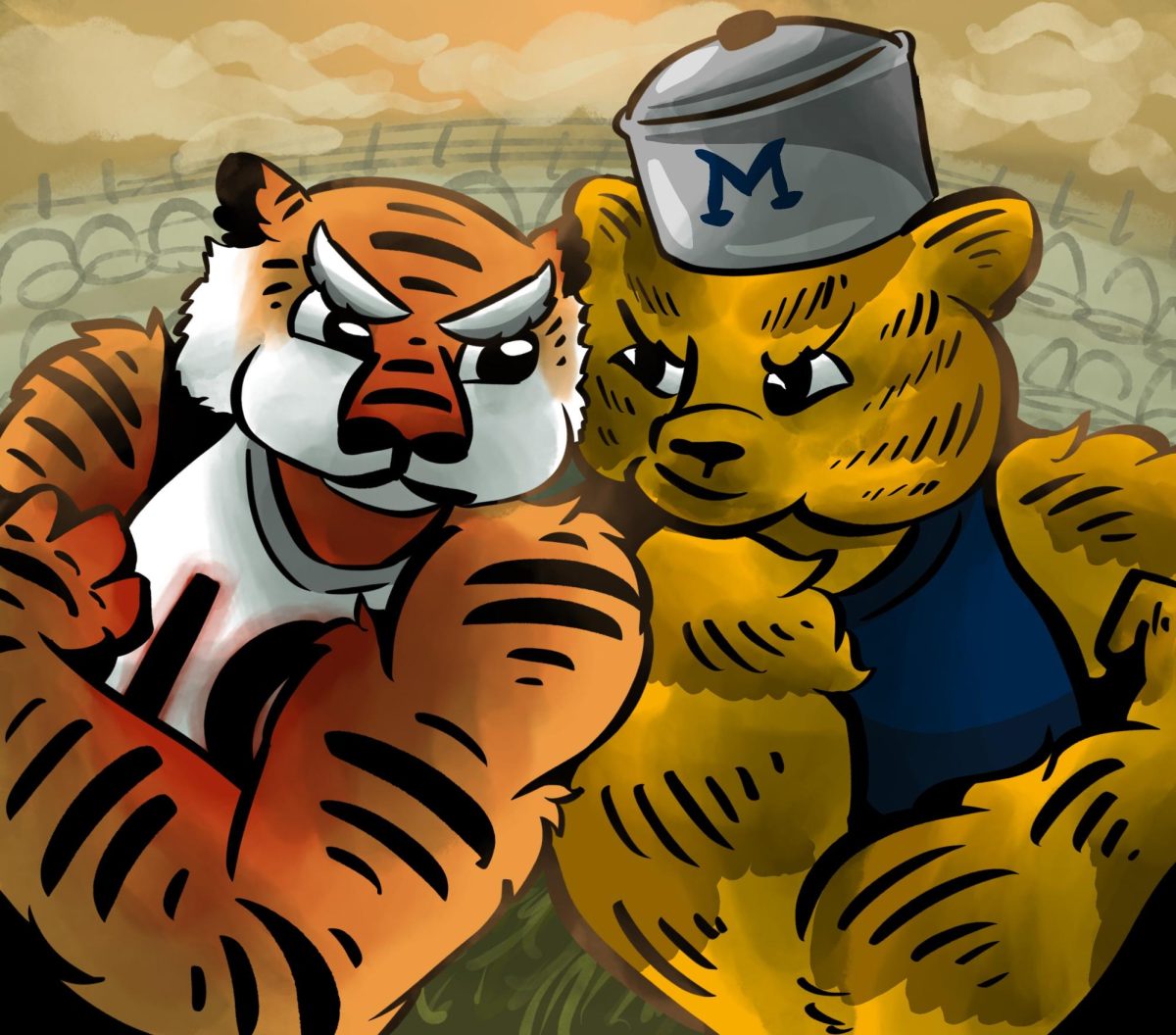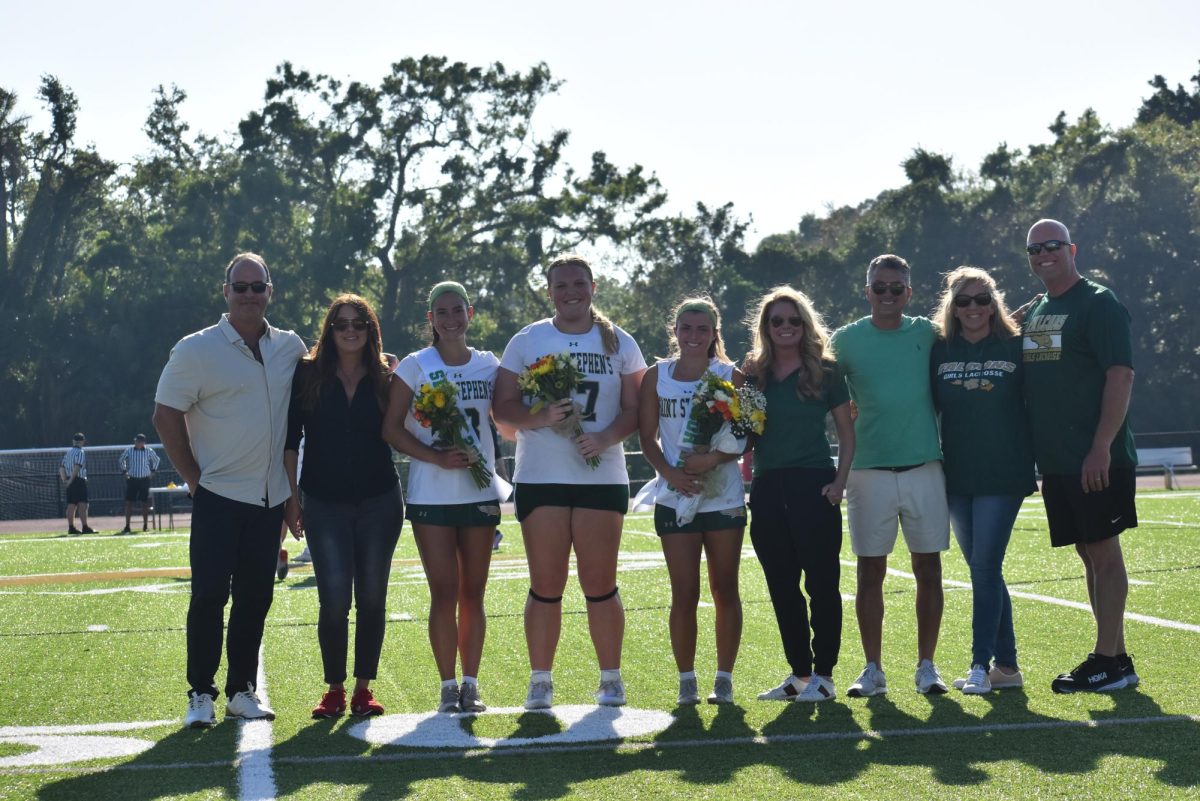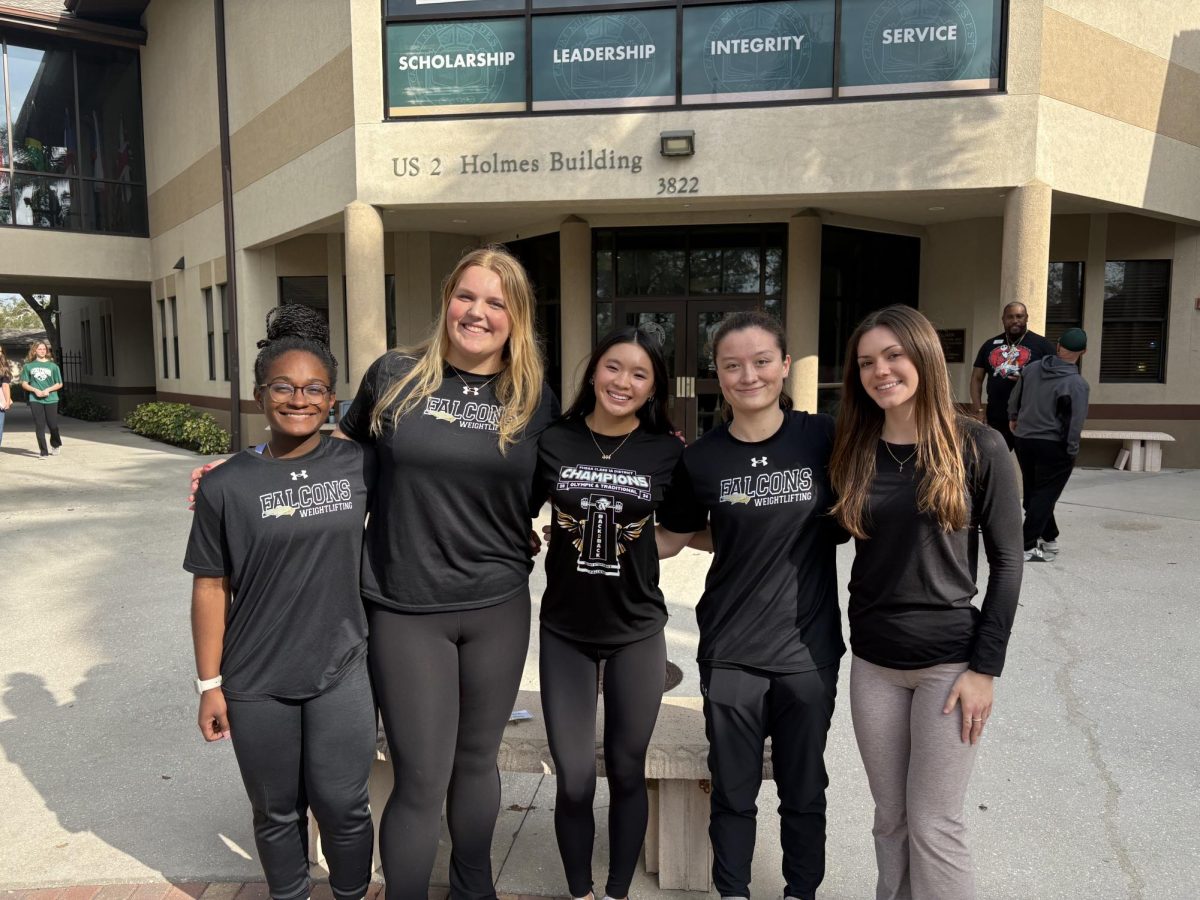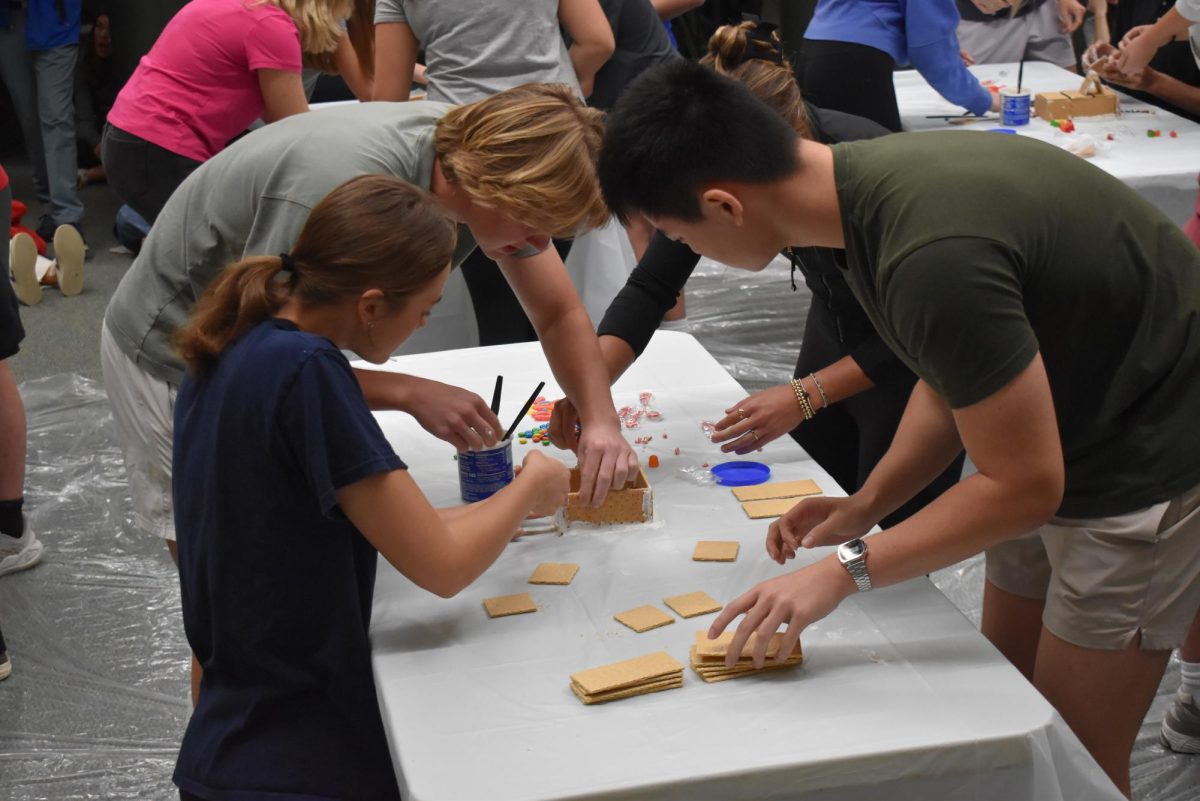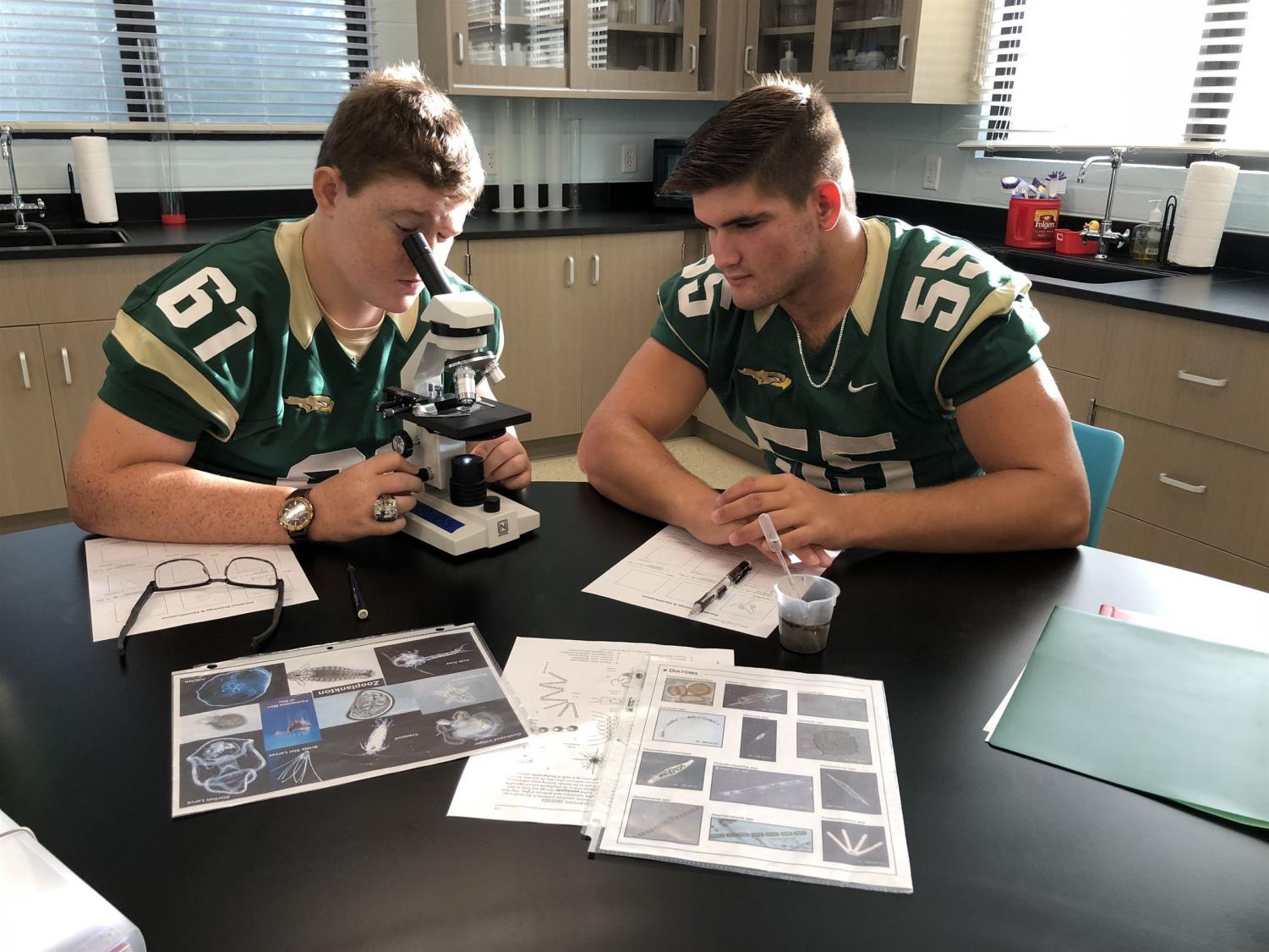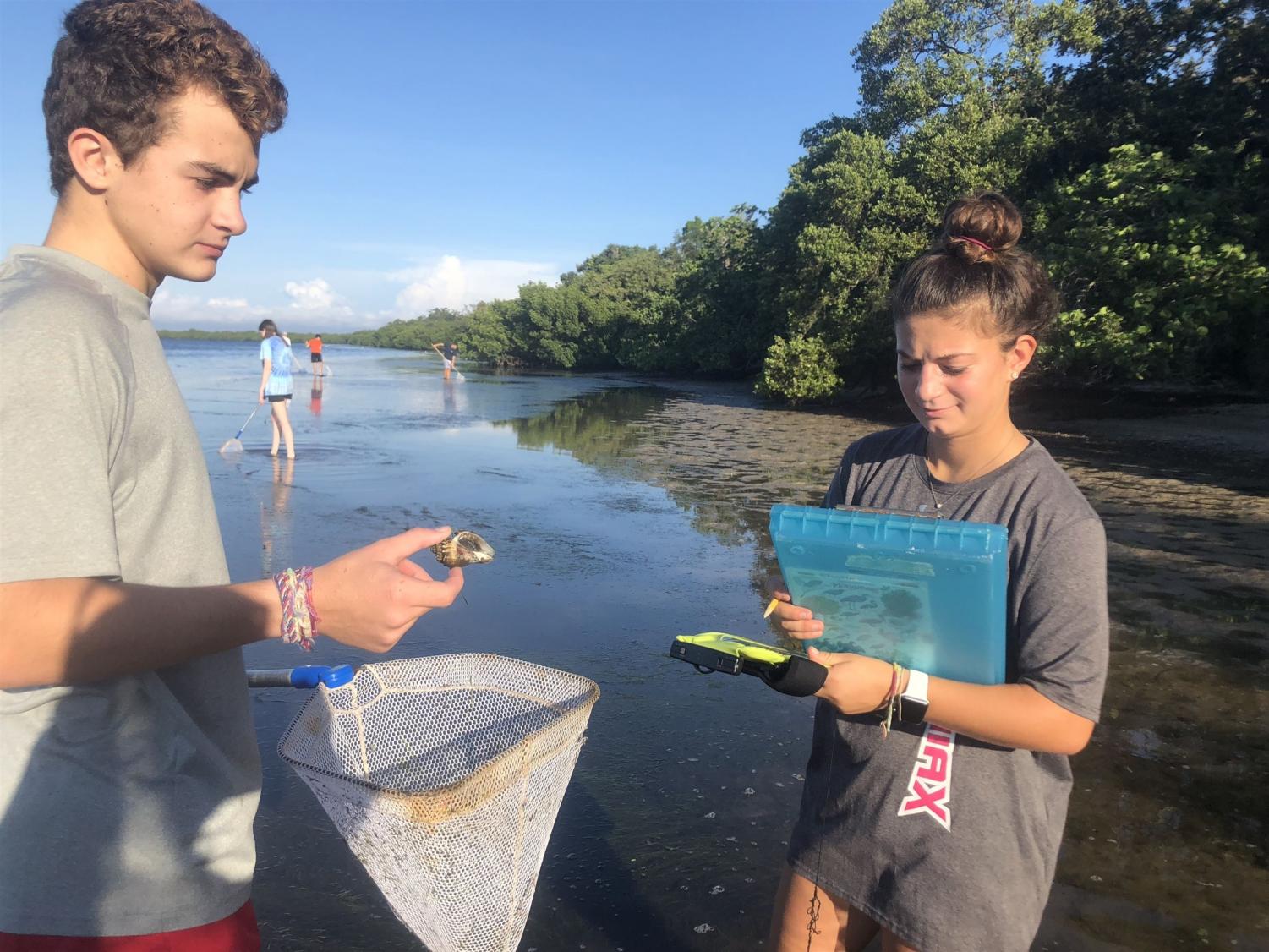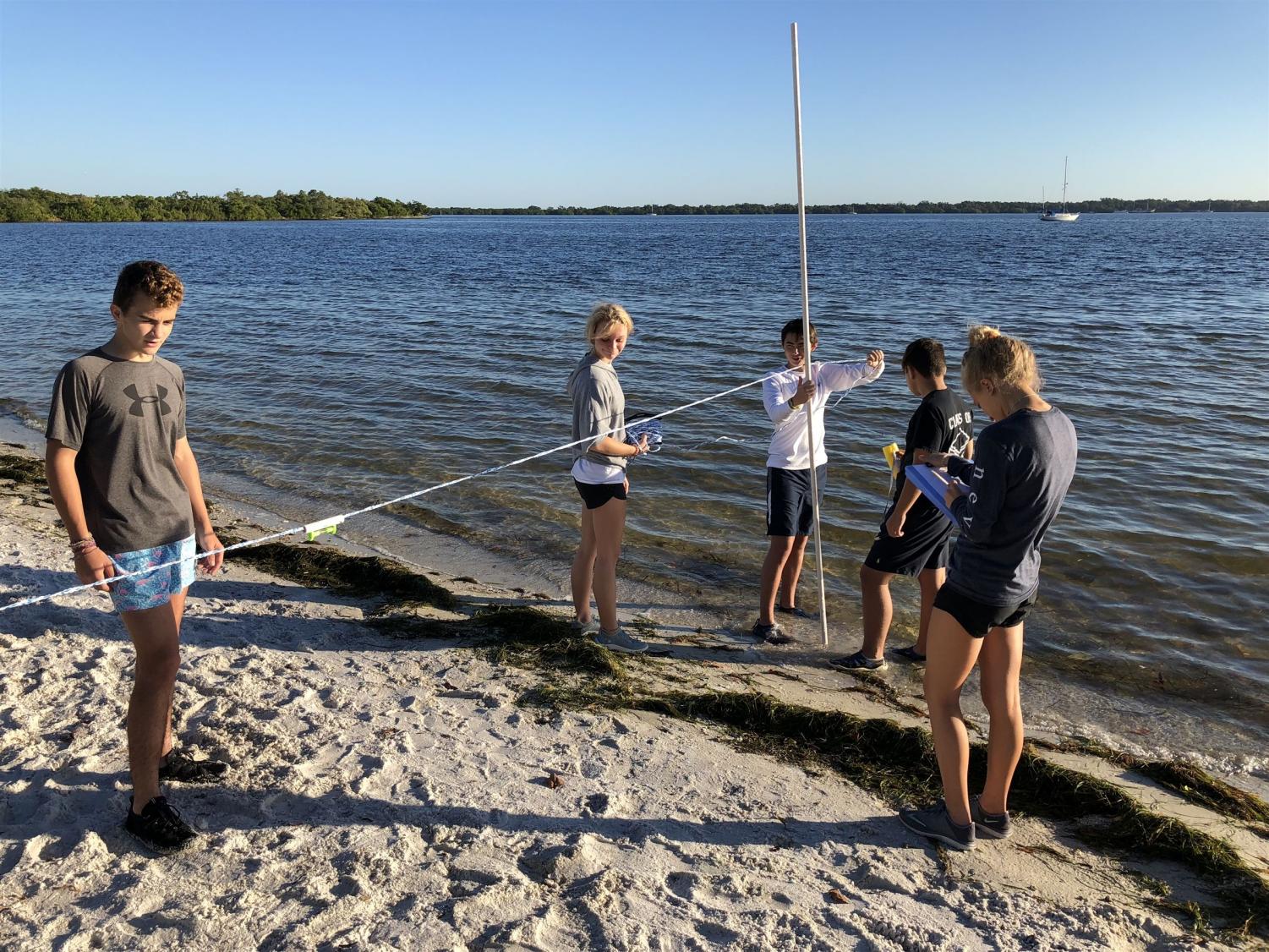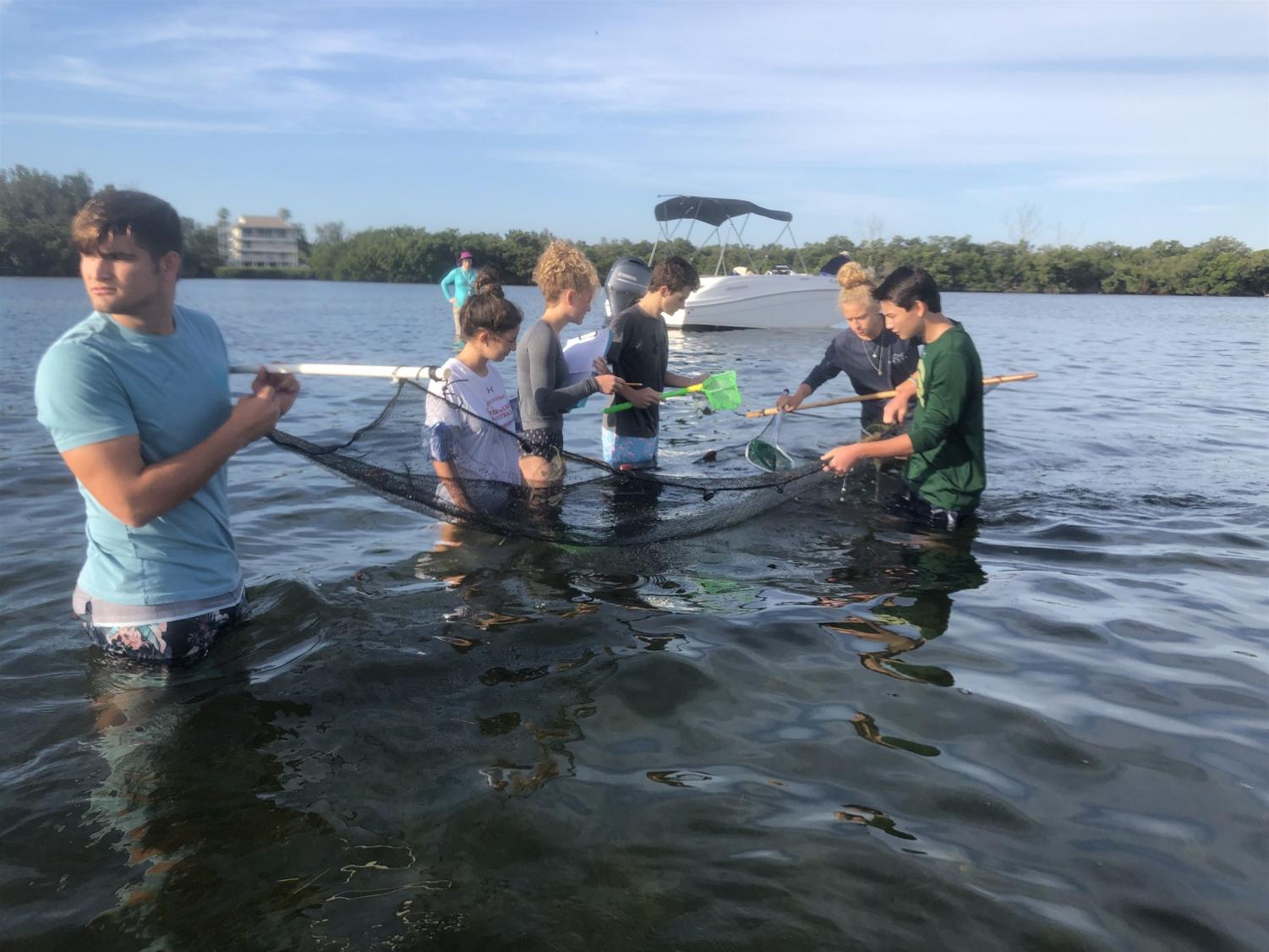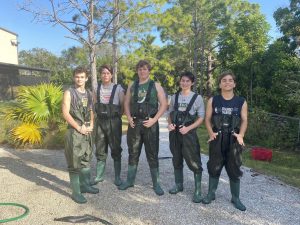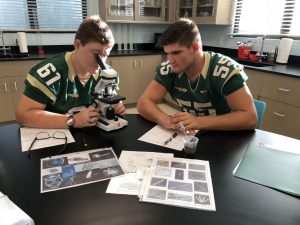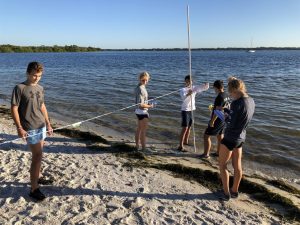It’s time for you to take Marine
A lot of Falcons overlook Marine Science because it’s off the beaten track. Here’s why you shouldn’t.
An underwater shot of the Marine students snorkeling.
During my four years at Saint Stephen’s, I’ve taken all types of classes: ones that are challenging , inspiring, fun, boring, even easy, I’ve been through it all; however, there’s one course (a program, really) that I’ve taken that really stands out. Simple adjectives don’t do it justice. This class is Marine Science.
Starting in Marine 1 junior year, I was one of the oldest students in the class as the majority of kids were sophomores. But that didn’t mean we didn’t get along or that I felt too much of an outsider. That’s one of the great parts of the class– the family atmosphere. The class started with everyone getting to know each other (team building is one of the qualities of the course), but marine science itself is what really brought us together.
We began learning about coral reefs, and marine systems, and even the deepest parts of the ocean, where conditions are so harsh you wouldn’t expect any organisms and species to thrive, yet nature prevails. Being able to understand how life can thrive in all conditions the oceans have to offer is just one of the amazing things learned in marine.
Senior David Rodriguez said, “Even when I was having a stressful day, Marine was a great escape because I could learn about things that genuinely interest me with an amazing class.”
Our “Marine Family,” which is what my marine class calls ourselves, has become so close over these past two years and I have to say it was an unforgettable class. We adopted a stingray from Mote and named it Gerald, we went swimming with manatees, and we even made a research paper on how different types of sunscreen affect mangrove growth. Now, what other classes would you be able to do stuff like that in?
Going away to college, I can easily say I will miss this course the most.
One of my best memories from Marine has to be the boat trip (each month a marine class goes boating or kayaking for a lab) where a seahorse gave birth on Sophia Sanchez’s hand. Once in a lifetime experiences like this were pretty rare in my other classes.
Junior Sean Rodriguez said, “Marine science is one of the best classes you can take at Saint Stephen’s.” He describes how unlike other classes, the “hands-on” experience of a “boat trip is world-class.”
In addition to the family atmosphere and amazing teachers, Mrs. Angelo and Mrs. Misiewicz, the concepts and skills students learn in Marine really prepare us for other classes. With so much studying about ocean environments and ecosystems, students who plan to take AP Biology or AP Environmental Science (APES) will find that they are more prepared for these subjects because of what they pick up in Marine.
The workload is not at all heavy, the teachers are simply amazing, and the information you learn is valuable and interesting. Many Saint Stephen’s students overlook Marine Science because it’s “over there by the gym,” and don’t realize how lucky we are to have such a powerful program.
The Marine Science Building itself is beautiful, built only a few years ago, with easy access to the dock on the McLewis Bayous and Manatee River, making our boat trips possible. These excursions allow students to take what they learned in the classroom and see it happening in the ocean for themselves.
So if you’re still deciding what elective to join next year, I whole-heartedly recommend Marine Science, and all my classmates agree. So don’t hesitate, join the Marine family!!


